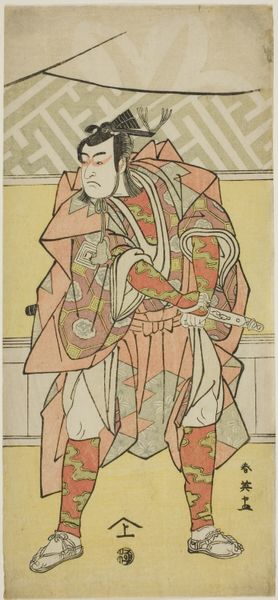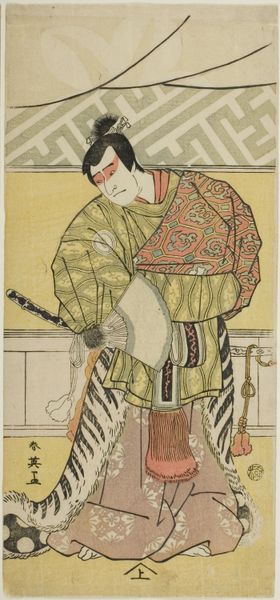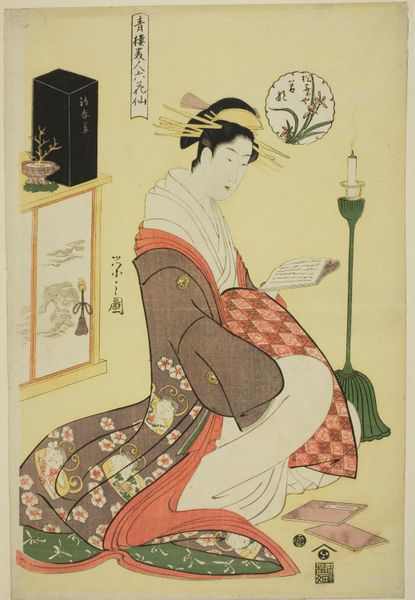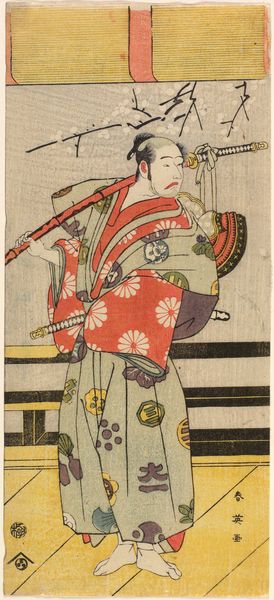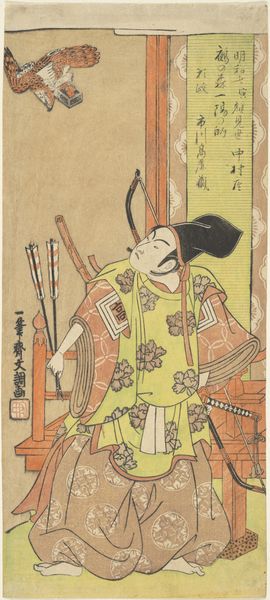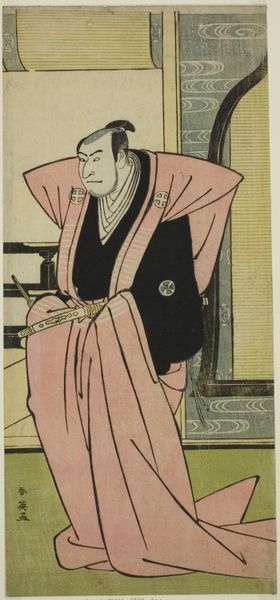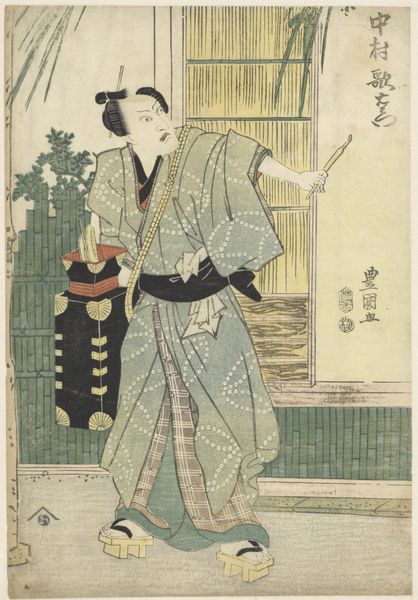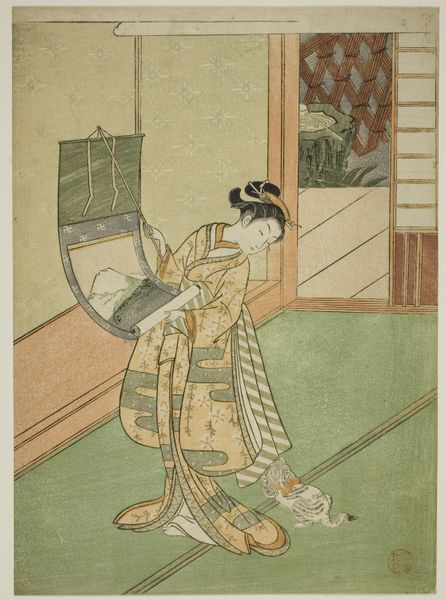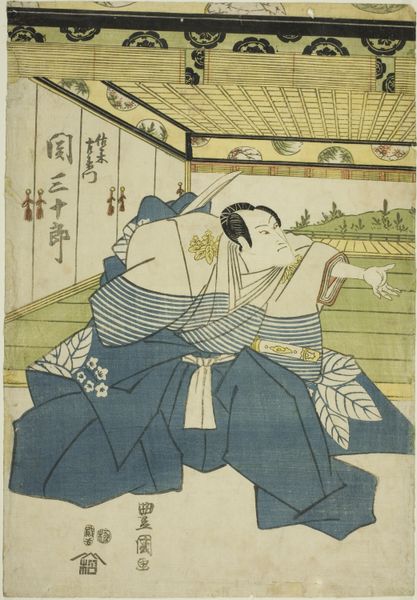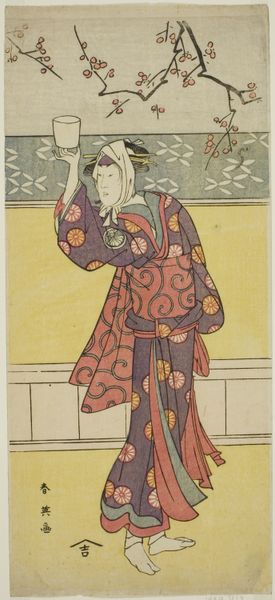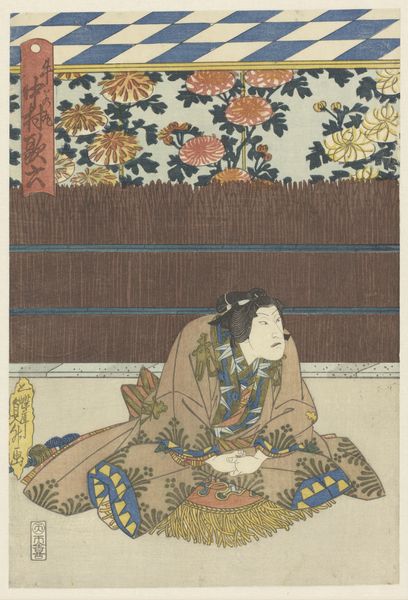
The Actor Sawamuro Sojuro III as Oda Kazusanosuke Harunaga in "The Banquet," the Final Act in Part One of the Play Kanagaki Muromachi Bundan (Muromachi Chronicle in Kana Script), Performed at the Ichimura Theater from the First Day of the Eighth Month, 1791 c. 1791
0:00
0:00
print, woodblock-print
#
portrait
# print
#
asian-art
#
ukiyo-e
#
japan
#
figuration
#
woodblock-print
Dimensions: 32.5 × 15 cm (12 13/16 × 5 7/8 in.)
Copyright: Public Domain
Curator: The woodblock print before us, dating back to circa 1791, immortalizes the actor Sawamura Sojuro III in his role as Oda Kazusanosuke Harunaga. Katsukawa Shun'ei, a luminary of the Ukiyo-e tradition, crafted this remarkable image, capturing a moment from the play "Kanagaki Muromachi Bundan." Editor: My first impression is one of controlled tension. The actor’s posture, that slight crouch and severe gaze, create a feeling of suppressed energy. The artist uses the geometry of the background and the patterned kimono to set off the curve of his posture. Curator: Absolutely. It's vital to understand Ukiyo-e prints within their socio-political context. This print wasn't just a representation; it was part of a larger visual culture surrounding the Kabuki theater, a space where social hierarchies were both reinforced and playfully subverted. The patronage of these prints supported the theater and celebrity culture. Editor: Indeed, but let's also consider the visual strategy. The artist uses distinct areas of color to describe both figure and ground in only a few carefully printed tones. The flatness is countered by the detailing of the face and kimono and the dramatic curving line which links the character’s features to his posture. Curator: And those minute details in his kimono reflect more than simple decoration; it's a mark of wealth and status accessible to common viewers, but potentially fraught with political meaning at the time. There were strict sumptuary laws! These images helped to reflect back to audiences an awareness of social order at a time when merchant wealth was upending traditional power. Editor: It's all a fine balance, then. The actor's gaze, though, suggests internal fortitude despite his seemingly subservient posture. There is great sophistication here in the way he’s captured. The artist is conveying much by revealing only so much. Curator: This print does, in its own way, democratize access to celebrity, solidifying theater's cultural influence. Thank you, examining this from a formal viewpoint clarifies how these visual codes worked. Editor: My pleasure! Understanding how Shun'ei uses design to create such character allows a deeper appreciation of the society these actors navigated.
Comments
No comments
Be the first to comment and join the conversation on the ultimate creative platform.
